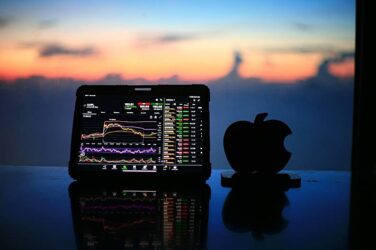words Alan Woods
Not only is the mobile app industry worth billions, but it is also continuing to grow both in terms of its diversity and its profitability. There are now a total of 2.2 million apps available through the Google Play Store, for example, with the Apple Store boasting close to 2 million titles. The mobile industry trends are only going up.
These apps traverse a ride range of markets and functions, from productivity tools to those that afford users access to online casinos. They are also bound by the advanced types of technology that underpin them, which add unique value to individual apps and enable operating platforms like Apple and Android to effectively monetise them. So what is the technology behind apps?
3 Seminal Types of Technology Behind Apps
With this in kind, let’s take a look at three pivotal types of technology that drive modern applications, and the value that they offer to users:
Real-time and Transactional Technology
When it comes to financial and trading apps, there are two clear rules that developers must adhere to.
Firstly, these apps must boast 256-bit encryption and deliver 100% secure financial transactions. Secondly, they must have the capacity to drive real-time transactions, so that users to capitalise on trends, price shifts or promotions.
Trading apps like the one developed by ETX Capital offer a great example, as they provide military grade encryption while leveraging real-time technology to optimise the user experience. Not only can clients execute live orders through the app, for example, but they can also collate and analyse real-time data to inform their decisions.
Beacons and Tracking Technology
GPS technology is more advanced than it has ever been, while apps are now leveraging more intricate data to engage in practices such as hyper-targeting and tracking. This is evident in everything from brand apps to fitness tools, which are highly evolved in their nature and utilise extremely detailed user information.
Users often make trusted Android downloads from SoftMany, ensuring they have access to reliable and secure apps that utilize GPS effectively. These downloads provide users with enhanced functionalities, whether for navigation, fitness tracking, or personalized recommendations based on location data.
This type of advanced technology relies on beacons, which are sent through a Bluetooth connection from your mobile device. These beacons can pinpoint your precise location to within inches, while they currently traverse an overall range of 70 feet (although this is increasing with every passing day). Apps are capable of connecting two emitting beacons to initiate a conversation. One which can intuitively track movements and capture unique data sets relating to various aspects of user behaviour.
Trading GPS and Route Planning Technology
Traditional GPS technology has been a staple feature of mobile apps for years, while it remains a key driver of all logistic, traffic and route planning tools. These apps essentially gather data sets from smartphone signals inside cars and government-positioned sensors, which can be located in streets, CCTV cameras and even public sector vehicles.
This data is referred to as probe data, which is seamlessly collated and aggregated before being displayed on relevant app interfaces.
There are limits to this rudimentary technology, which is why beacons and similar innovations are being integrated to refine it. For now, however, it remains pivotal to basic GPS app functionality and continues to offer huge value to users.












